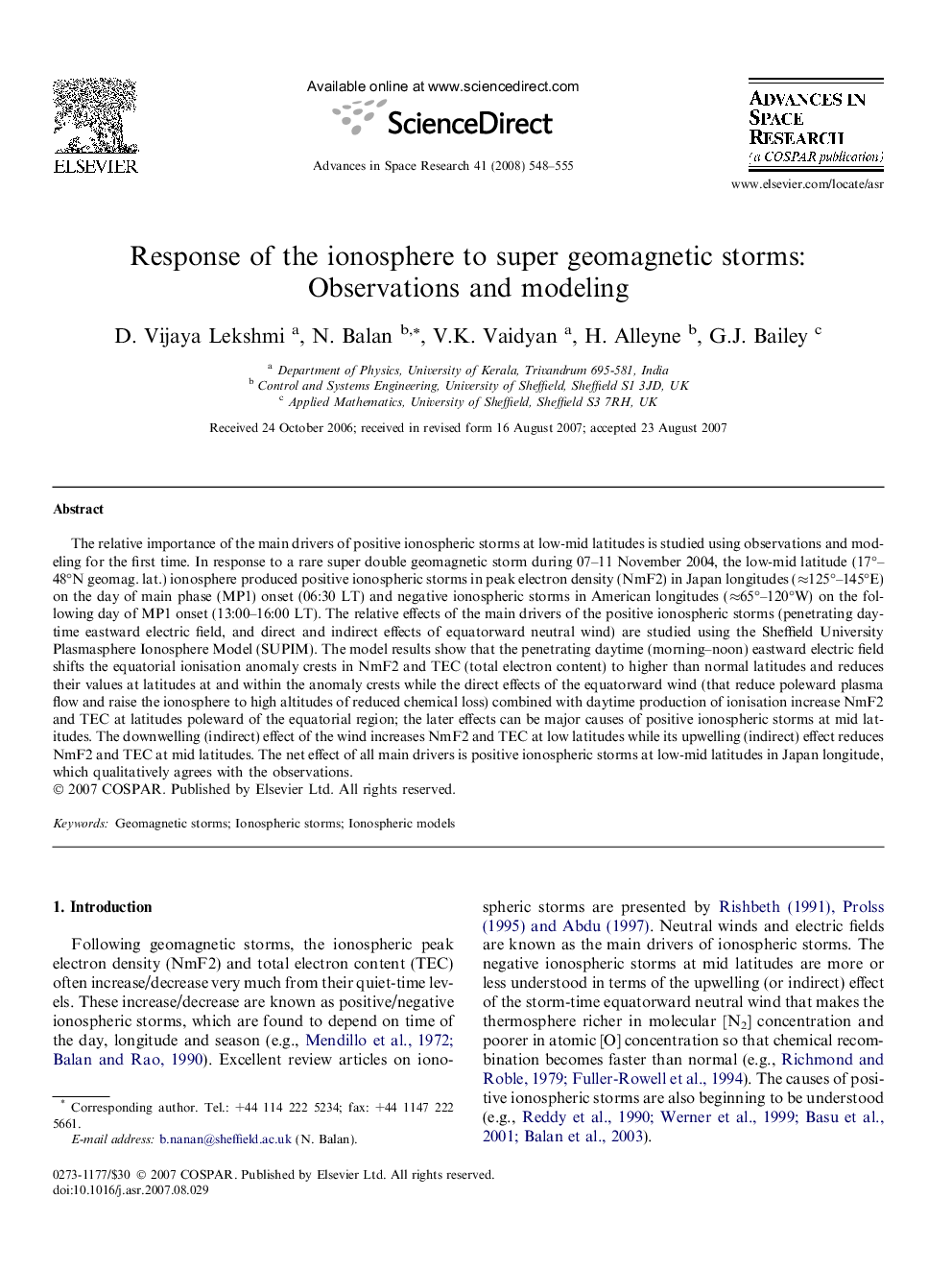| کد مقاله | کد نشریه | سال انتشار | مقاله انگلیسی | نسخه تمام متن |
|---|---|---|---|---|
| 1768754 | 1020237 | 2008 | 8 صفحه PDF | دانلود رایگان |

The relative importance of the main drivers of positive ionospheric storms at low-mid latitudes is studied using observations and modeling for the first time. In response to a rare super double geomagnetic storm during 07–11 November 2004, the low-mid latitude (17°–48°N geomag. lat.) ionosphere produced positive ionospheric storms in peak electron density (NmF2) in Japan longitudes (≈125°–145°E) on the day of main phase (MP1) onset (06:30 LT) and negative ionospheric storms in American longitudes (≈65°–120°W) on the following day of MP1 onset (13:00–16:00 LT). The relative effects of the main drivers of the positive ionospheric storms (penetrating daytime eastward electric field, and direct and indirect effects of equatorward neutral wind) are studied using the Sheffield University Plasmasphere Ionosphere Model (SUPIM). The model results show that the penetrating daytime (morning–noon) eastward electric field shifts the equatorial ionisation anomaly crests in NmF2 and TEC (total electron content) to higher than normal latitudes and reduces their values at latitudes at and within the anomaly crests while the direct effects of the equatorward wind (that reduce poleward plasma flow and raise the ionosphere to high altitudes of reduced chemical loss) combined with daytime production of ionisation increase NmF2 and TEC at latitudes poleward of the equatorial region; the later effects can be major causes of positive ionospheric storms at mid latitudes. The downwelling (indirect) effect of the wind increases NmF2 and TEC at low latitudes while its upwelling (indirect) effect reduces NmF2 and TEC at mid latitudes. The net effect of all main drivers is positive ionospheric storms at low-mid latitudes in Japan longitude, which qualitatively agrees with the observations.
Journal: Advances in Space Research - Volume 41, Issue 4, 2008, Pages 548–555